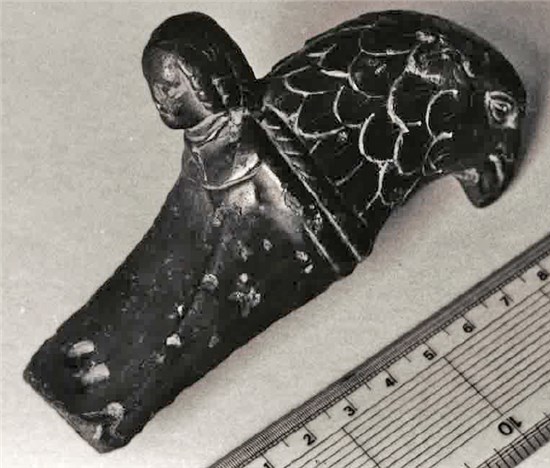July's Find of the Month is very unusual in several respects. First, we are breaking the mould slightly as, in our enthusiasm to show it to you, the Portable Antiquities record is not yet complete and the object is still undergoing research. Secondly, because of its rarity and the circumstances under which it was recovered.
It was found with a metal detector in a field in North Norfolk buried in a hoard together with a number of Roman pots. It was included within a concretion of tools, soil and iron oxide that was excavated complete. The object was then fully revealed in a controlled off-site stage excavation of the concreted assemblage. Shown in figure 1 below is the mass from which the object emerged, a tiny part of it can just be seen at the edge in the one o’clock position.

Figure 1

Figure 2
The find that emerged is shown above in figure 2 and below in figure 3, and along with the other artefacts that emerged is now undergoing further research before being recorded onto the Portable Antiquities Scheme database. It has been identified as a Roman farrier’s tool called a Butteris and it was used to maintain and pare horses’ hooves.

Figure 3
The more usual form of a Roman butteris is a plain construction of iron, but this example has a wonderful composite design with a copper alloy moulded handle and an iron blade. The copper alloy handle appears to have some associated symbolism, as the eagle terminal and the projecting human head are repeated on other examples such as the smaller butteris handle shown in figure 4 that was found in Belgium.

Figure 4
As a result of a much worn Roman nummus coin found in the assemblage, the deposition of the hoard can be placed right at the end of the Roman occupation of Britain. Credit is due to the finders who realising the significance of what they had found contacted the Historic Environment Service to enable a controlled excavation to be carried out.